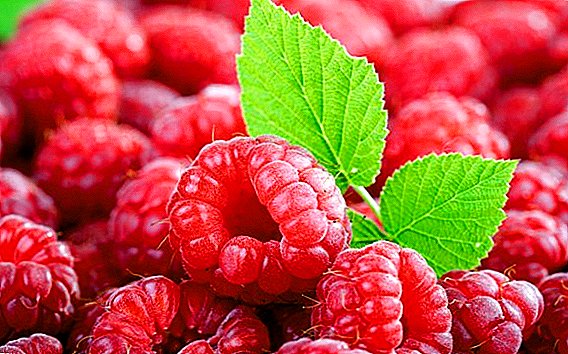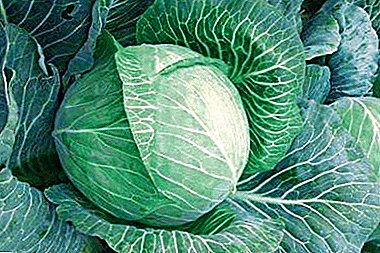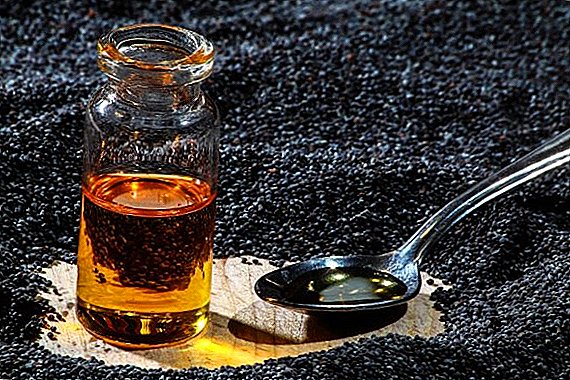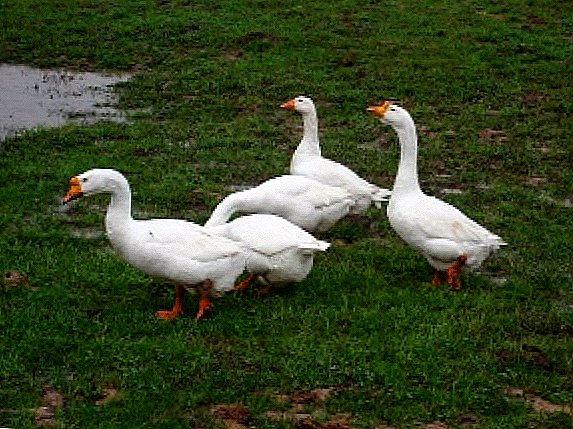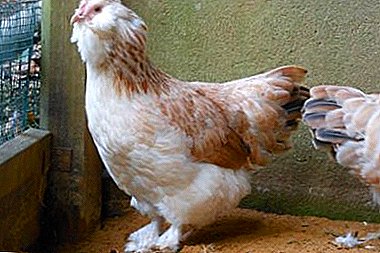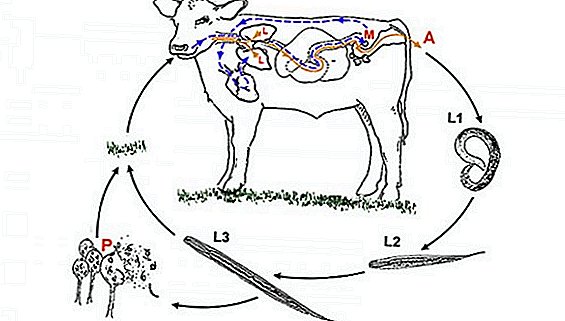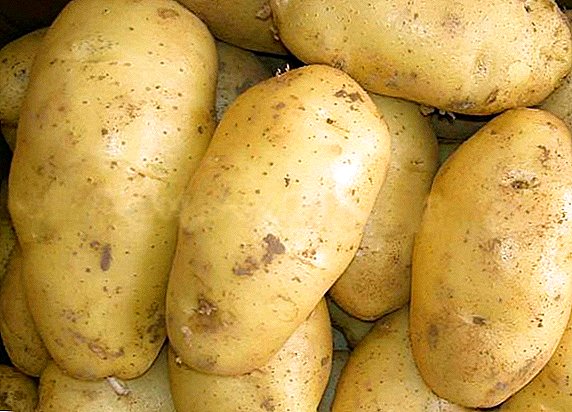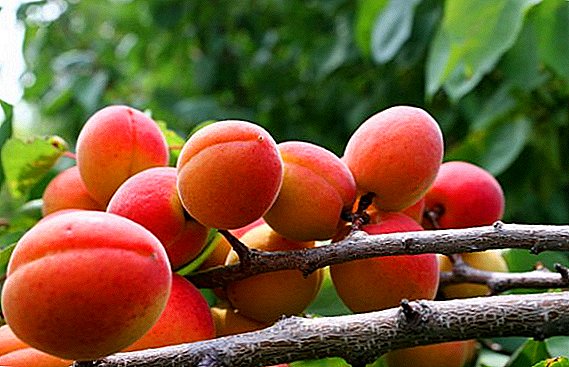 The variety of red-cheeked apricot among the great variety is distinguished by large and fragrant fruits that have distinctive red sides and an indescribably sweet, alluring fragrance. Such apricots will easily become not only a decoration of any table, but they will certainly be the pride of the owner. Despite the fact that this fruit tree is unpretentious enough to properly grow apricot seedlings Red-cheeked, you need to know some of the nuances, recommendations and rules of care.
The variety of red-cheeked apricot among the great variety is distinguished by large and fragrant fruits that have distinctive red sides and an indescribably sweet, alluring fragrance. Such apricots will easily become not only a decoration of any table, but they will certainly be the pride of the owner. Despite the fact that this fruit tree is unpretentious enough to properly grow apricot seedlings Red-cheeked, you need to know some of the nuances, recommendations and rules of care.
History of the variety
The exact history of this variety is authentically unknown, although there is evidence that the selection of the variety was carried out in the Nikitsky Botanical Garden back in 1947, when it was entered in the state register. It is noteworthy that due to a number of advantages and properties, the Red-cheeked apricot variety became the progenitor for a number of varieties that are also popular and attract gardeners with their endurance, taste and high yield.
Variety description
 Apricot fruits of this variety are characterized by a round (occasionally cordate) shape and large size. Their weight, as a rule, reaches 60 g. A characteristic feature of the fetus is a rough separating seam. Ripe apricots are painted in bright orange color with rich red sides, which served as the basis for the name of this variety. The pulp of ripe fruit is light and tender. The taste is sweet, with notes of sourness. The Red-cheeked Apricot is a tall fruit tree with a spreading crown and long branches. The height, as a rule, reaches 4 meters; however, in practice, experts recommend forming a crown on their own so that the height is no more than 3 meters, thereby increasing the number of lower branches. This greatly simplifies tree care and fruit picking.
Apricot fruits of this variety are characterized by a round (occasionally cordate) shape and large size. Their weight, as a rule, reaches 60 g. A characteristic feature of the fetus is a rough separating seam. Ripe apricots are painted in bright orange color with rich red sides, which served as the basis for the name of this variety. The pulp of ripe fruit is light and tender. The taste is sweet, with notes of sourness. The Red-cheeked Apricot is a tall fruit tree with a spreading crown and long branches. The height, as a rule, reaches 4 meters; however, in practice, experts recommend forming a crown on their own so that the height is no more than 3 meters, thereby increasing the number of lower branches. This greatly simplifies tree care and fruit picking.
Did you know? Red-cheeked apricot seedlings are fairly resistant to harsh conditions, which means that the life of a tree often reaches 50 years.
Advantages and disadvantages of the variety
Advantages of Krasnoshcheky:
- rapid growth and development of seedlings;
- high yield;
- receiving the first crops already 2-3 years after disembarking;
- the variety is independent and does not depend on pollination from other trees;
- due to late flowering, the yield of the tree does not depend on the spring frosts;
- favorably takes root and develops on various soils;
- characterized by increased resistance to drought and frost;
- does not require constant care.
- despite the resistance to a predominant number of diseases, it is often exposed to infection;
- predisposition to thickening of the crown forces periodically to carry out treatment from pests;
- grows poorly and bears fruit in the lowlands;
- dependent on abundant sunshine and warm air.
Proper apricot planting
Ensuring the conditions of active, proper development and mass fruiting depends on several factors, the main and decisive among which is the correct planting of the seedling. Many gardeners know in general how to plant an apricot in the spring. The presented instructions will allow to plant the apricot correctly and to a person with experience, and a novice gardener. 
How to choose seedlings when buying
It is almost impossible to estimate the yield, durability and strength of a sapling when buying, but it is possible to draw conclusions about its health and ability to take root in the plot, which is decisive. First of all, you need to pay attention to the condition of the trunk and bark - the presence of cracks and dark spots indicates the pain of the seedling. The root system should be at least small, but stronger. Weak and thin roots - an indicator that the tree will take root quite difficult and long. When buying in the spring is better to choose seedlings with small buds. The height of the tree is not significantly important, but, as a rule, the standard seedling reaches 70 cm.
Did you know? Experienced gardeners often grow seedlings of bones on their own. This is done in the summer when the bone is most prone to germination. Often, the yield from such a tree is not only not inferior to an ordinary seedling, but also much higher.
Site selection and soil requirements
 To plant an apricot of the Krasnoshcheshky variety in the garden, it is best to choose a little sublime, well lit and reliably protected from strong gusty winds. The tree is quite sun-loving, so a place for apricot should be chosen isolated, distant from the rest of the garden - so the sapling will not be in the shade and will receive a sufficient amount of lighting. The tree, moderately receiving heat and the sun, gives a big crop and simply transfers strong frosts. The lack of moisture compensates for the drought resistance of the Red-cheeked variety.
To plant an apricot of the Krasnoshcheshky variety in the garden, it is best to choose a little sublime, well lit and reliably protected from strong gusty winds. The tree is quite sun-loving, so a place for apricot should be chosen isolated, distant from the rest of the garden - so the sapling will not be in the shade and will receive a sufficient amount of lighting. The tree, moderately receiving heat and the sun, gives a big crop and simply transfers strong frosts. The lack of moisture compensates for the drought resistance of the Red-cheeked variety.
Important! Excess moisture is detrimental to fruit trees of this variety. This is especially true in regions with high humidity and frequent torrential rains. Thus, an apricot seedling planted in a lowland, initially almost doomed to death from the debate of the root system.
The soil at the landing site should be loose and light, pre-fertilized. In the pit, it is desirable to organize drainage. It is noteworthy that the root system of apricot, as a rule, is several times larger than the crown, due to which the distance between the seedlings should be at least 4-5 meters.
Landing pit preparation
- recommended dimensions of the landing pit - 65x65x65 cm;
- without fail, the ground intended for backfilling must be cleared of roots, stones and dense pieces;
- It is strictly forbidden to allow salt and salt solutions to enter the soil, which inevitably reduces the fertility of the seedling.

- The pit of the set sizes is dug out.
- Drainage is laid on its bottom (gravel composition, crushed stone, universal drainage).
- Drainage from above is filled up with a small layer (no more than 10 cm) of the cleared soil, wood ashes, humus, ammonium nitrate (or other organic mineral fertilizer).
- Fertilized layer to prevent contact of young roots with fertilizers from above is filled with clean soil (ideally black soil).
Step-by-step landing scheme
The correct planting is a guarantee of active growth and development of the seedling, as well as a guarantee of a decent harvest.
The sequential landing pattern is as follows:
- First you need to dig and prepare the landing hole.
- An apricot seedling is placed in a hole and buried in such a way that the root neck is slightly below the ground level.
- It is necessary to cover the tree with soil first from the upper layer, and only then from the bottom.
- After the pit has fallen asleep, the soil in it must be carefully compacted by any means at hand or with feet. At the same time it is necessary to condense from the edges of the pit to its center, that is, towards the seedling.
- As a result of compaction, the soil will drain a little - the level of the soil must be leveled with the help of ground from the pit or the adjacent plot.
- Planting a seedling ends with watering the tree at the root in a volume of 25-30 liters.
- The first feeding is best done no earlier than a week later, when the tree begins to take root.
Care for apricot seedlings
 Red-cheeked apricot seedlings do not require particularly reverent care, but you should pay attention to the advice and recommendations of experienced gardeners to accelerate the growth of the tree and strengthen its condition not only during flowering and fruiting, but also before frosts. First of all, the land around the trunk of a sapling should be mulched regularly. This procedure is extremely important because the soil becomes loose and is not capable of retaining a sufficient amount of moisture, which is why the roots are forced to look for water in the deeper layers. Thus, mulching strengthens the root system of the young seedling. Strong roots - a guarantee of health, growth and durability of the tree, so this issue should be taken responsibly. Apricots should be watered regularly and abundantly, increasing the volume and frequency of watering in the spring, when the crown is actively forming, and reducing it in the fall.
Red-cheeked apricot seedlings do not require particularly reverent care, but you should pay attention to the advice and recommendations of experienced gardeners to accelerate the growth of the tree and strengthen its condition not only during flowering and fruiting, but also before frosts. First of all, the land around the trunk of a sapling should be mulched regularly. This procedure is extremely important because the soil becomes loose and is not capable of retaining a sufficient amount of moisture, which is why the roots are forced to look for water in the deeper layers. Thus, mulching strengthens the root system of the young seedling. Strong roots - a guarantee of health, growth and durability of the tree, so this issue should be taken responsibly. Apricots should be watered regularly and abundantly, increasing the volume and frequency of watering in the spring, when the crown is actively forming, and reducing it in the fall.
Important! Do not pour apricot red-cheeked excessively. In view of the love of the variety for water, the sapling, of course, will not suffer, but such watering will stimulate the growth of excess shoots that will take power from the young tree, which will inevitably affect the growth rate and yield.
During the period of the first wintering of saplings, when the tree has not yet become stronger, despite the winter-hardiness of the Red-cheeked variety, it must be covered with burlap or thick cloth.
Do seedlings varieties Krasnoshcheky crown is formed independently, so in the first year, pruning is not worth it. Throughout the time you need to monitor the condition of the seedling, regularly conducting inspections. If cracks are detected, they should be treated with garden baking. Also, an unformed, weakened tree is often sick and / or attacked by parasites. This is manifested by brown spots, ulcers, cracks, twisting of leaves and other things. Depending on the problems found, the stem can be treated with garden pitch, Bordeaux mixture, or copper-based mineral compounds.
All about the care of the red-cheeked apricot
 As mentioned earlier, the red-cheeked apricot seedlings are quite unpretentious in their care. Along with high yields, this variety is notable for its significant frost resistance and drought resistance. In order to get a high yield of wood and protect it from various pests and diseases, it is enough just to follow the rules and recommendations regarding the main aspects of care: watering, fertilizer and pruning.
As mentioned earlier, the red-cheeked apricot seedlings are quite unpretentious in their care. Along with high yields, this variety is notable for its significant frost resistance and drought resistance. In order to get a high yield of wood and protect it from various pests and diseases, it is enough just to follow the rules and recommendations regarding the main aspects of care: watering, fertilizer and pruning.
How to water
The drought resistance of the Krasnoshchy variety is great, but in real conditions of our climate is insufficient. therefore Watering the tree should be done regularly. Otherwise, the plant will not receive a sufficient amount of water, and the development of the kidneys will stop. As a result - a partial or complete lack of harvest. In the second half of summer, the frequency of watering should be reduced, making them exclusively on dry days, because during flowering and fruiting, excessive moisture prolongs the growth of young shoots, which can also adversely affect the yield.
How to feed apricot
The red-cheeked apricot variety is highly valued by specialists and is widely popular among ordinary people, so every gardener, without exception, seeks to get the maximum amount of fruit yield. For this, it is necessary not only to properly water the tree, but also to fertilize it in a timely manner with special compounds.
 The first apricot feed must be carried out when planting: for this purpose, humus and / or a complex of mineral organic fertilizers are added to the soil of the planting pit. Subsequently, it is recommended to fertilize apricots after the rest period and in front of it, that is, in early spring and autumn. It is noteworthy that for an apricot the composition of the fertilizer must be multi-component and include not only humus, but also mineral mixtures containing nitrogenous substances.
The first apricot feed must be carried out when planting: for this purpose, humus and / or a complex of mineral organic fertilizers are added to the soil of the planting pit. Subsequently, it is recommended to fertilize apricots after the rest period and in front of it, that is, in early spring and autumn. It is noteworthy that for an apricot the composition of the fertilizer must be multi-component and include not only humus, but also mineral mixtures containing nitrogenous substances.
Important! The variety of apricot Red-cheeked depends on the content of potassium in the soil, which is why it is extremely important to feed in a timely manner. If the element will not do enough, the tree will begin to rapidly grow old, dry out and inevitably perish. The most satisfying option is fertilizing with complex compositions of fertilizers containing potassium, manganese and boron.
Basic rules for pruning
Active fruiting apricots occurs on seasonal annuals, flowering (bouquet) branches and spur. Over time, the main branches of the tree (skeletal) begin to bare, which largely affects the yield of the entire tree. Because of this, as a rule, the main amount of buds is located on fresh annual shoots. Cultivation of the Red-cheeked apricot will be more efficient if you regularly prune the tree. First of all, you need to remove old, dry and damaged branches. It is noteworthy that experts recommend pruning and perennial branches with a large number of shoots, but low yield.
Did you know? In the flowering apricot, the foliage and large branches receive food in the first place, only after saturation of which the juice arrives at the young shoots. Thus, pruning of old branches stimulates the juice supply of young ones and, as a result, their active growth and increased productivity.
 The optimal time for pruning is the end of spring or the beginning of summer. During this period, apricot is formed and is gaining momentum, therefore it is relatively easy to tolerate this procedure. It is desirable to cut branches up to the main trunk of a tree or to the border of a forming bud. After pruning, the place of the cut is strongly recommended to be treated with a mineral compound (to speed healing), and to feed the whole tree.
The optimal time for pruning is the end of spring or the beginning of summer. During this period, apricot is formed and is gaining momentum, therefore it is relatively easy to tolerate this procedure. It is desirable to cut branches up to the main trunk of a tree or to the border of a forming bud. After pruning, the place of the cut is strongly recommended to be treated with a mineral compound (to speed healing), and to feed the whole tree.Ripening and harvesting
The yield of apricot Red-cheeked depends largely on the correct planting and care for the seedling. However, if everything was done correctly, the result will certainly please. Fruit ripening begins by mid-July. This process is usually quite long, which makes it possible to increase the frequency of fees. At high yields, it is advisable to harvest apricots 3-4 times. Thanks to this, it is possible not only to increase the volumes of fresh fruit harvesting, but also to solve the problem of their storage.
Important! Often the fruits of apricot on one tree do not spice up at the same time, remaining green at the time of the main harvest. Even in a torn state, the fruits, being in a warm and sunny place, are able to ripen within a week. Otherwise, the individual apricots simply peel off and disappear.
Wintering apricot variety Red-cheeked
The winter hardiness of the Krasnoshcheky variety is almost unique, which allows this formed tree to easily transfer any temperature drops, even up to 30 degrees of frost. In order for the tree to easily endure the winter, it is enough to fertilize the soil around the trunk abundantly late in autumn and mulch it.
 Young trees, despite the resistance, in the first year after planting is still worth protecting from frost. Make it simple enough. As in the case of strong trees, in the fall you need to feed the sapling and loosen the soil around it. It is advisable to lay a small layer of hay or spruce branches around the trunk to protect the root system from freezing. In case of severe frosts, the seedling itself and a small piece of land around it can be covered with a thick cloth to avoid freezing.
Young trees, despite the resistance, in the first year after planting is still worth protecting from frost. Make it simple enough. As in the case of strong trees, in the fall you need to feed the sapling and loosen the soil around it. It is advisable to lay a small layer of hay or spruce branches around the trunk to protect the root system from freezing. In case of severe frosts, the seedling itself and a small piece of land around it can be covered with a thick cloth to avoid freezing.
The variety of apricot Red-cheeked is an excellent choice for every gardener, which allows with a minimum of effort and investment to get not only a great harvest of tasty, large, fragrant apricots, but also a real reason for pride of the owner.


